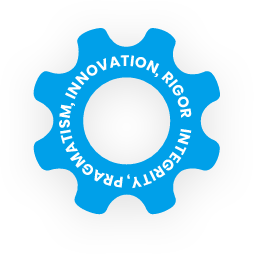What Are Some Common Issues That Can Occur with Rubber Tubes?
Rubber tubes are widely used in various applications such as automotive, industrial, and medical industries due to their unique properties such as flexibility, durability, and resistance to high pressure, temperature, and chemicals. However, just like any other material, rubber tubes can face a range of issues that can affect their performance and lifespan.
(1)Cracking: One of the most common issues with rubber tubes is cracking. This occurs when the rubber material loses its elasticity and becomes hard and brittle, resulting in visible cracks on the surface of the tube. Cracking can be caused by several factors such as exposure to sunlight, ozone, heat, and chemicals. To prevent cracking, it is important to store rubber tubes in a cool and dry place, away from direct sunlight and heat sources.
(2)Swelling: Rubber tubes can also swell due to exposure to certain chemicals or fluids. This can cause the tube to become misshapen and eventually fail. To prevent swelling, it is important to choose a rubber tube material that is compatible with the chemicals or fluids that it will come into contact with.
(3)Leaks: Another common issue with rubber tubes is leaking. Leaks can occur due to several factors such as improper installation, wear, and tear, or damage to the tube. To prevent leaks, it is important to ensure that the tube is installed properly and that all connections are secure.
(4)Kinking: Rubber tubes can also kink or bend out of shape due to improper installation or handling. This can cause the tube to become damaged and eventually fail. To prevent kinking, it is important to ensure that the tube is installed properly and that it is not twisted during use.
(5)Contamination: Rubber tubes can also become contaminated with dirt, debris, or other foreign substances. This can affect the tube's performance and lead to issues such as clogging or reduced flow. To prevent contamination, can using filters or strainers can help to prevent foreign objects from entering the tube.
(6)Abrasion: Rubber tubes can also become worn or damaged due to abrasion from rubbing against other surfaces. This can cause the tube to develop holes or become weakened over time. To prevent abrasion, it is important to ensure that the tube is properly installed and secure and that it does not come into contact with other surfaces during use.
Rubber tubes are used in a variety of applications, ranging from automotive and industrial machinery to medical and laboratory equipment. The manufacturing process for rubber tubes involves several steps, including mixing, extrusion, curing, and finishing.
(1)Mixing: The first step in the production of rubber tubes is the mixing of raw materials. This involves combining natural or synthetic rubber with various additives, such as carbon black, zinc oxide, and accelerators. The purpose of these additives is to improve the physical properties of the rubber, such as its strength, elasticity, and resistance to heat and chemicals. The raw materials are typically mixed in a large, high-speed mixer that blends the ingredients together to form a uniform mixture.
(2)Extrusion: Once the rubber compound has been mixed, it is ready to be extruded into tubes. Extrusion is the process of forcing a material through a die to create a continuous shape. In the case of rubber tubes, the extrusion process involves feeding the mixed rubber compound into an extruder, which is a machine that applies heat and pressure to the material to soften it and force it through a die.
(3)Curing: Once the rubber tube has been extruded, it must be cured to give it its final properties. Curing is the process of applying heat and pressure to the rubber to cross-link its molecules, which makes it stronger, more elastic, and more resistant to heat and chemicals. The curing process can be done using several methods, including steam, hot air, or microwave radiation.
(4)Finishing: Once the rubber tube has been cured, it is ready for finishing. This involves cutting it to the desired length, as well as trimming any excess material or imperfections. The tube may also be inspected for quality to ensure that it meets the required specifications.
Depending on the intended use of the tube, additional processing steps may be required, such as adding reinforcing layers or applying a protective coating.










 English
English
.jpg?imageView2/2/format/jp2)
.jpg?imageView2/2/format/jp2)
.jpg?imageView2/2/format/jp2)
.jpg?imageView2/2/format/jp2)
.jpg?imageView2/2/format/jp2)
.jpg?imageView2/2/format/jp2)
